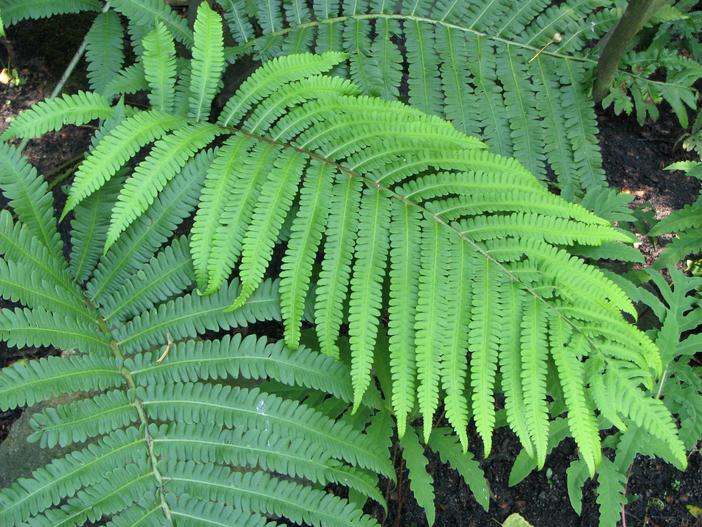Oriental Ostrich Fern
(Pentarhizidium orientale)
Oriental Ostrich Fern (Pentarhizidium orientale)
/
/

Agnieszka Kwiecień, Nova
CC BY-SA 4.0
Image By:
Agnieszka Kwiecień, Nova
Recorded By:
Copyright:
CC BY-SA 4.0
Copyright Notice:
Photo by: Agnieszka Kwiecień, Nova | License Type: CC BY-SA 4.0 | License URL: https://creativecommons.org/licenses/by-sa/4.0 | Uploader: Nova | Publisher: Wikipedia Commons






























Estimated Native Range
Summary
Pentarhizidium orientale, commonly known as Oriental Ostrich Fern, is a deciduous fern native to moist, shaded forest floors and stream banks in East Asia, particularly in China, Japan, and Korea. It typically grows to a height of 2-4 feet (0.6-1.2 meters) and a width of 2 feet (0.6 meters), featuring gracefully arching fronds that resemble the plumes of an ostrich, hence the common name. The fronds are bright green and add a lush, textured look to the garden, especially when planted en masse.
Oriental Ostrich Fern is valued for its ease of maintenance and its ability to thrive in shady conditions, making it an excellent choice for woodland gardens, shaded borders, and as a naturalizing ground cover. It prefers consistently moist soil and can tolerate a range of drainage conditions, although it does best in soils that are well-drained. It requires part shade to full shade to avoid scorching the fronds. While generally disease-free, it can suffer from rust and leaf spot if conditions are too damp. It is not known for aggressive roots or invasiveness, but it can spread via rhizomes to form dense colonies if left unchecked.CC BY-SA 4.0
Oriental Ostrich Fern is valued for its ease of maintenance and its ability to thrive in shady conditions, making it an excellent choice for woodland gardens, shaded borders, and as a naturalizing ground cover. It prefers consistently moist soil and can tolerate a range of drainage conditions, although it does best in soils that are well-drained. It requires part shade to full shade to avoid scorching the fronds. While generally disease-free, it can suffer from rust and leaf spot if conditions are too damp. It is not known for aggressive roots or invasiveness, but it can spread via rhizomes to form dense colonies if left unchecked.CC BY-SA 4.0
Plant Description
- Plant Type: Fern
- Height: 2-4 feet
- Width: 1-2 feet
- Growth Rate: Moderate
- Flower Color: N/A
- Flowering Season: Non-Flowering
- Leaf Retention: Deciduous
Growth Requirements
- Sun: Part Shade, Full Shade
- Water: Medium
- Drainage: Slow, Medium, Fast
Common Uses
Deer Resistant, Drought Tolerant, Low Maintenance, Potted Plant
Natural Habitat
Moist, shaded forest floors and stream banks in East Asia
Other Names
Common Names: Japansk Strutbräken
Scientific Names: , Matteuccia orientalis, Pentarhizidium orientale, Onoclea orientalis, Pentarhizidium orientalis, Matteuccia orientalis f. monstra, Struthiopteris orientalis, Pentarhizidium japonicum, Matteuccia japonica, Dryopteris peregrina
GBIF Accepted Name: Pentarhizidium orientale (Hook.) Hayata